Disrupting the Doctor
RADIOLOGY IS THE CANARY IN THE COAL MINE
A radiologist’s job is to analyze data and look for patterns and deviations from patterns, things that computers and AI do well (and computers don’t need to sleep). AI will pre-read images—highlighting areas of concern and offering possible diagnoses, noting incidental findings—cutting down on read times and, despite an overall increase in medical imaging, reduce the total amount of work for radiologists. Technological dislocation and imbalanced labor supply- demand mean that the disruption of radiology is in full swing:
-
01Enlitic’s deep learning radiology platform performed 50% better than human radiologists in classifying malignancies and had a false-negative rate of 0%.
-
02IBM’s acquisition of Merge Healthcare gave Watson a 30-billion-image dataset from which to learn radiology.
-
03Radiology as a specialty is becoming less attractive:
- » 10% drop in residency slots 2013–2017
- » 30% of radiology residency programs unfilled in 2016
- » Starting salary decrease from $450,000 to $300,000.
- » Competition for radiology residencies—one of the most in demand as recently as 2009—was by 2014 less than that for pediatrics, historically one of the less competitive.
Aspects of endocrinology, anesthesia, intensive care and radiology are primarily data driven, therefore they would be some of the early areas ripe for the use of AI, ML and automation.
Sumbul Desai
Apple and Stanford University
PATHOLOGY HAS A SIMILAR PAST TO RADIOLOGY, SIMILAR FUTURE
Like radiology, pathology relies on image analysis, pattern recognition and identifying deviations from the pattern—elements amenable to AI. Now, clinical pathology relies largely on glass slides and light microscopy, but anything that can be digitized will be digitized. Though FDA clearance for digital pathology has been slow, certain uses have been approved (e.g., immunohistochemistry image analysis). A “whole slide” imaging platform from Philips has just been approved. The trend toward digital pathology will continue, and the US will follow the EU, where CE-IVD mark has allowed clinical platforms since 2014. We anticipate that pathology, like radiology, will move closer to clinical medicine.
RADIOLOGY AND PATHOLOGY MAY COMBINE INTO A NEW SPECIALTY, INFORMATION SPECIALIST
As suggested by Saurabh Jha and Eric Topol, information specialists won’t focus on extracting information from histology and images, but rather manage AI-extracted information and place it in the clinical context of the patient.
I think if you work as a radiologist, you’re like the coyote that’s already over the edge of the cliff but hasn’t looked down…People should stop training radiologists now.
Geoffrey Hinton
Creative Destruction Lab’s Machine Learning and the Market for Intelligence conference, October 2016
COGNITIVE SPECIALTIES WILL CEDE GROUND TO ALGORITHMS
Hematology, endocrinology, nephrology and cardiology all rely on collecting, analyzing and synthesizing data. AI anticipates sepsis before there are observable symptoms, allowing for early and more effective interventions. In hematology, an AI algorithm predicted outcomes for certain treatments in chronic myeloid leukemia. Heart disease, kidney failure and diabetic crises move at a slower pace than sepsis, but likewise rely on data inputs.
PRIMARY CARE DOCTORS’ RESPONSIBILITIES WILL MOVE UPSTREAM
Much of day-to-day primary care is algorithmic and driven by protocols, and can be off-loaded to AI and midlevel providers. Increasingly, primary care physicians will lead midlevel teams, focus on complex cases, and manage triage. However, as triage itself becomes more protocol based, AI will begin to make triage decisions. For all cognitive specialties, including primary care, technological inroads will allow doctors (and midlevels) to concentrate on challenging cases and the human aspects of medicine: effective communication, empathy and ethics.
2016: Sedasys system proven effective, but pulled from market because of anesthesiologist pushback
MANY ASPECTS OF PROCEDURAL MEDICINE WILL BE PROTECTED FROM AUTOMATION
Technology will assist, rather than replace, surgeons and proceduralists. For some specialties, components of p ractice will change. Dermatologists, for example, may not evaluate a lesion’s malignancy—which will be done remotely with cell phone pictures fed through AI—but will still perform the biopsy.
2016: An AI algorithm performed as well as dermatologists in assessing common malignant lesions
INTEREST IN CLINICAL INFORMATICS WILL INTENSIFY
The Clinical Informatics subspecialty was of officially recognized by the American Board of Medical Specialties in 2011. Formal fellowship programs began in 2014 and have grown from one (at Stanford) to 26. The deluge of collected health data, the increasing use of AI and analytics to make sense of the data, and the challenges of applying it to clinical situations (both individually and to a population) mean that the demand for MDs formally trained in clinical informatics will explode. Certification for nonphysicians in clinical informatics will also increase.
-
400 SurgeriesSuccessful use of a closed-loop autonomous robot anesthetist, 2016 clinical trial
